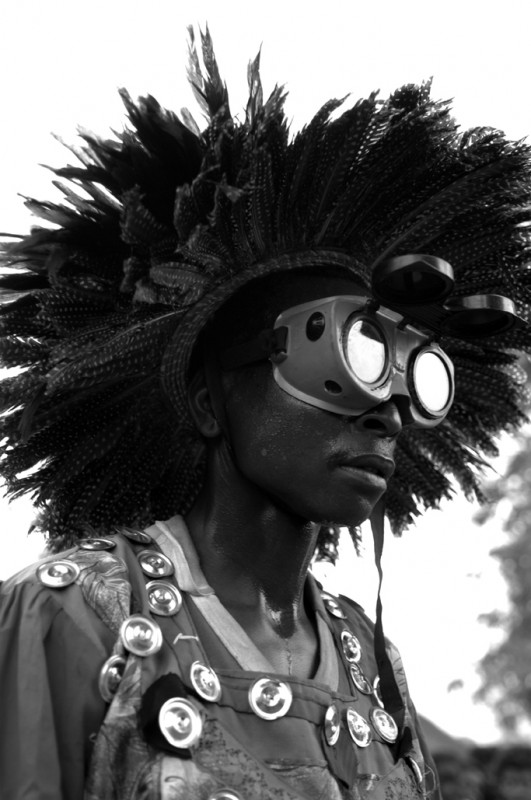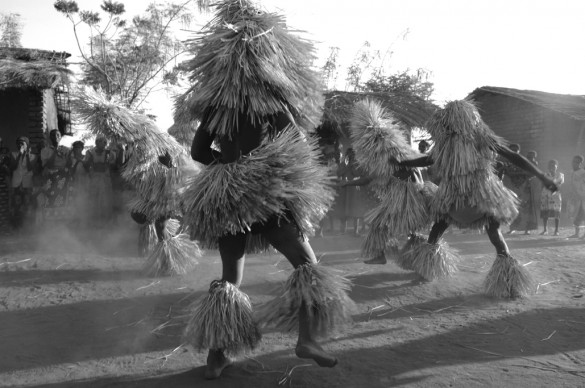The Cummer Museum of Art & Gardens is excited to present a remarkable body of work by photojournalist Elizabeth Gilbert. Opening September 13, Histories in Africa: 20 Years of Photography by Elizabeth Gilbert draws from her impressive career documenting this extraordinary continent.
Gilbert’s startling black and white photographs are featured in the permanent collections of The Los Angeles County Museum of Art and The Museum of Fine Arts, Houston, Texas. They have also been exhibited most recently at The Museum of Arts and Design in New York City in the exhibition ‘The Global Africa Project’ (2010-2011). Her work is also highlighted in two publications, Broken Spears: A Maasai Journey, published by Atlantic Monthly Press, and Tribes of the Great Rift Valley, published by Abrams, and she has also been published in TIME, Newsweek, LIFE, Paris Match, and The New York Times among other publications.
A native of Jacksonville, Gilbert attended St. Mark’s, Bartram, and Episcopal before graduating from Parsons School of Design in 1990. The following year she moved to Kenya to work with photographer Peter Beard. As a news photographer, Gilbert documented on the brutal civil wars in Rwanda, Somalia, and Sudan. She “soon realized that photographing these events had little impact on their outcome. The brutality and tragedy I witnessed then hit me years later like a great tsunami slowly gathering itself at sea.” Instead, she turned her attention to recording the rapidly disappearing traditional cultures she witnessed around her. “I wanted to find the Africa that hadn’t yet been ravaged by foreign empires, wars, and the modern world,” said Gilbert.
“Nairobi was a different city then,” said Gilbert. “Maasai tribesmen could be found grazing cattle on the side of the road, or entering elevators in city skyscrapers carrying just a spear and a sack of tobacco. It seemed they had stepped into town from another era.”
This juxtaposition between old and new ways of life struck a chord with Gilbert, who drew on her background as a photojournalist to document these traditions before they disappeared. “Most of it is already gone,” said Gilbert, who cites “the steady infiltration of commercial tourism in rural areas; the growing popularity of Western clothing, music, and culture; and the diminishing numbers of small tribes such as the Batwa Pygmies” as just a few examples of this vanishing world.

The Circumcisionist, Malawi, 2006, silver gelatin photographic print, 26 ¼ x 40 in. © Elizabeth Gilbert.
For her first book, Broken Spears: A Maasai Journey, Gilbert spent four years embedded with this noted tribe. Despite the fact that their images were mass-produced on commercial items like postcards and T-shirts, the tribe was losing its customs and traditions to modern culture. Gilbert captured their ceremonies, such as the Eunoto ceremony, a retirement ceremony for warriors, and “The Horn of the Ox,” where young boys try to prove their manhood by grabbing an ox by its horns, as well as more controversial aspects of Maasai life such as female circumcision and lion hunting. “To me,” said Gilbert, “they were relics from Africa’s past. When I looked at them I saw the history, the greatness they had known when the Rift Valley was theirs. The early photographs from these safaris are like artifacts to me, pieces of history suspended in time.”
“The loss of African tradition in the last century and the change I witnessed during my own travels slowly redefined my role as a photographer,” said Gilbert. “I no longer saw myself as an invisible recorder, but as a collaborator with the people whom I photographed. I was a stranger, yet they had allowed me to document their most private rituals and ceremonies. This permission in itself was their own acknowledgement that a way of life was disappearing. Influenced by this, I began to create a more idealized portrayal of what I believed was a vanishing world.”
Her second book continued this journey into the Great Rift Valley, a vast area of Eastern Africa that is thought by scientists to be the birthplace of the human species. Gilbert spent nearly three years living among more than 25 ethnic groups, including the Samburu and Mursi. “Though African ceremony is full of vivid pageantry, most of my photographs are in black and white,” said Gilbert, who hoped “this would distill the subjects in a timeless record, and preserve the memory of a lost era long after the process of globalization has eroded it forever.”

The Maz Brotherhood, Omo Valley, Ethiopia, 2005, silver gelatin photographic print, 26 ¼ x 40 in. © Elizabeth Gilbert.
Gilbert’s photographs capture Africa in transition. The Cummer’s exhibition draws from her twenty-year career and spans the entire scope of her work.
“After traveling and living abroad, bringing the work home to Jacksonville, the city where I was raised, is especially meaningful to me,” said Gilbert. “This is where I grew up. My family, oldest friends, teachers, god parents – the people who shaped my childhood – are all here. It is very personal to me to be coming home for this milestone, my first solo museum exhibition.”
This exhibition will be on view through December 30, 2012. For further information on programming, please visit our website.



